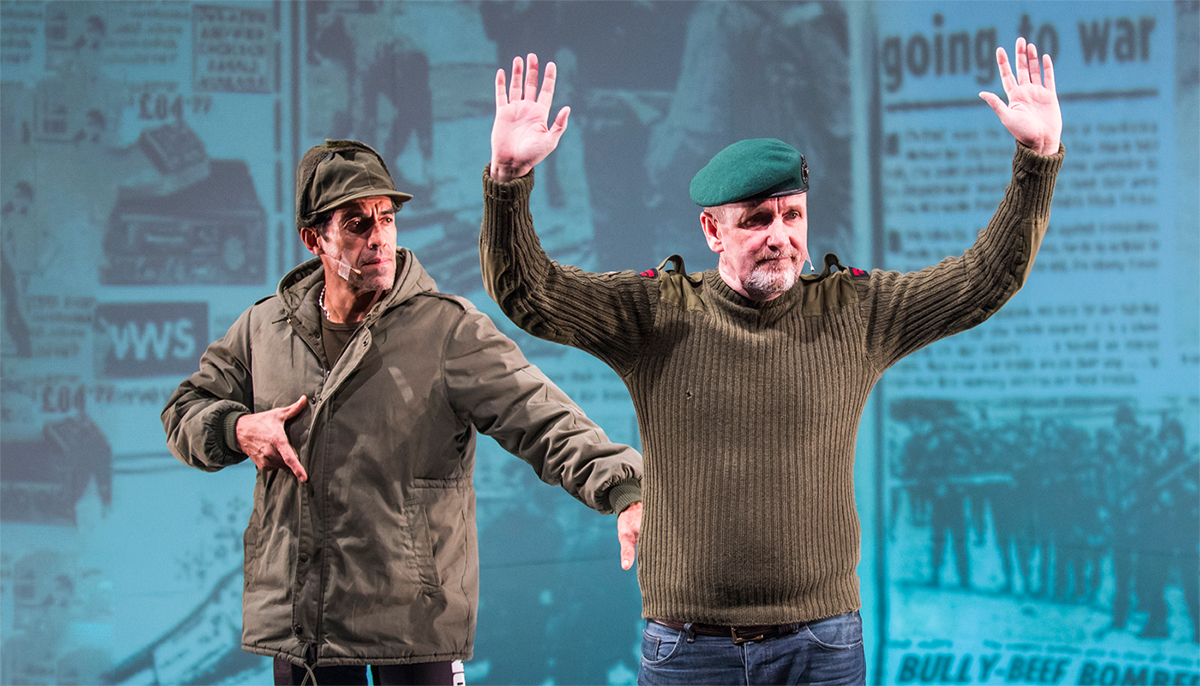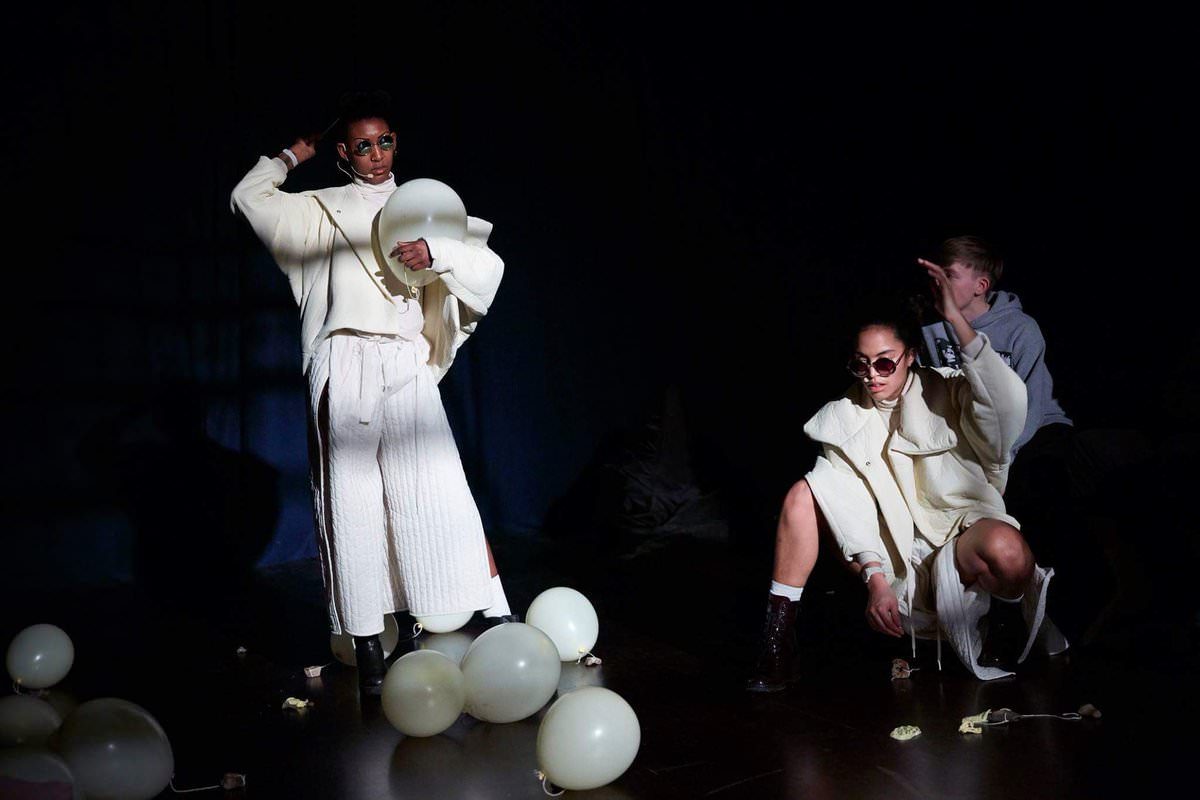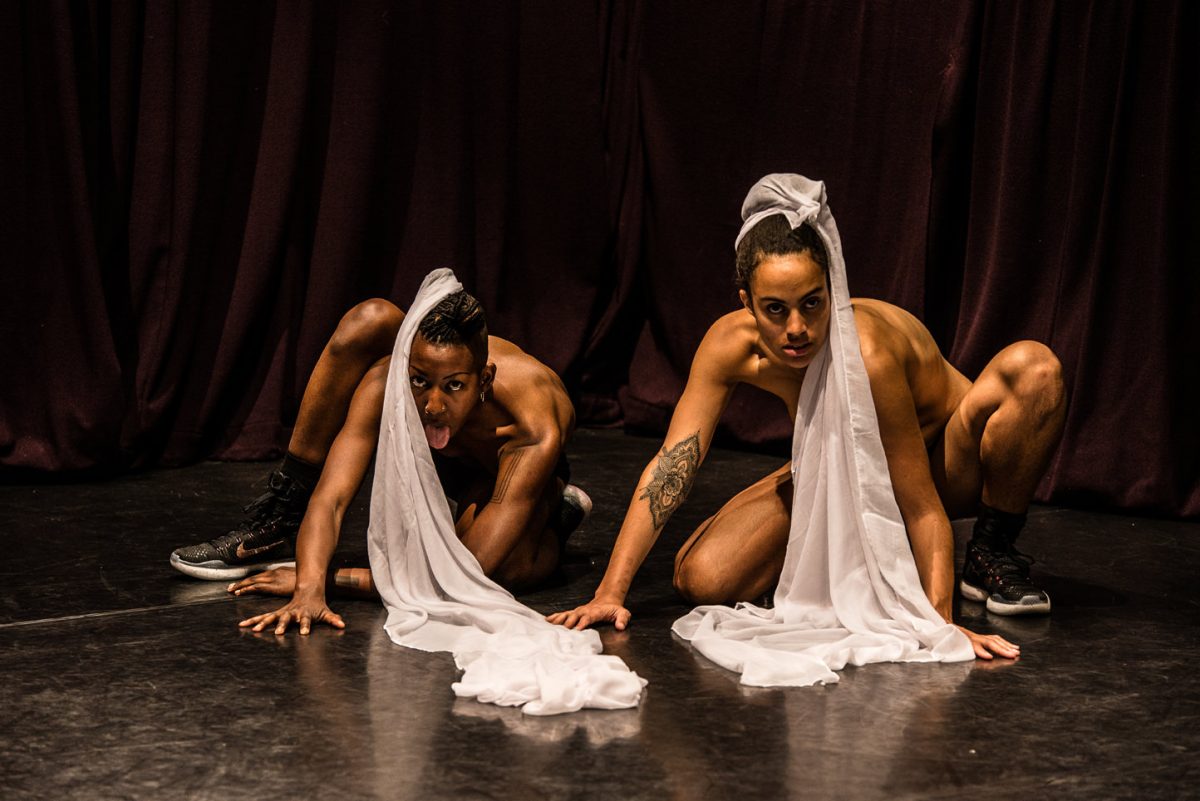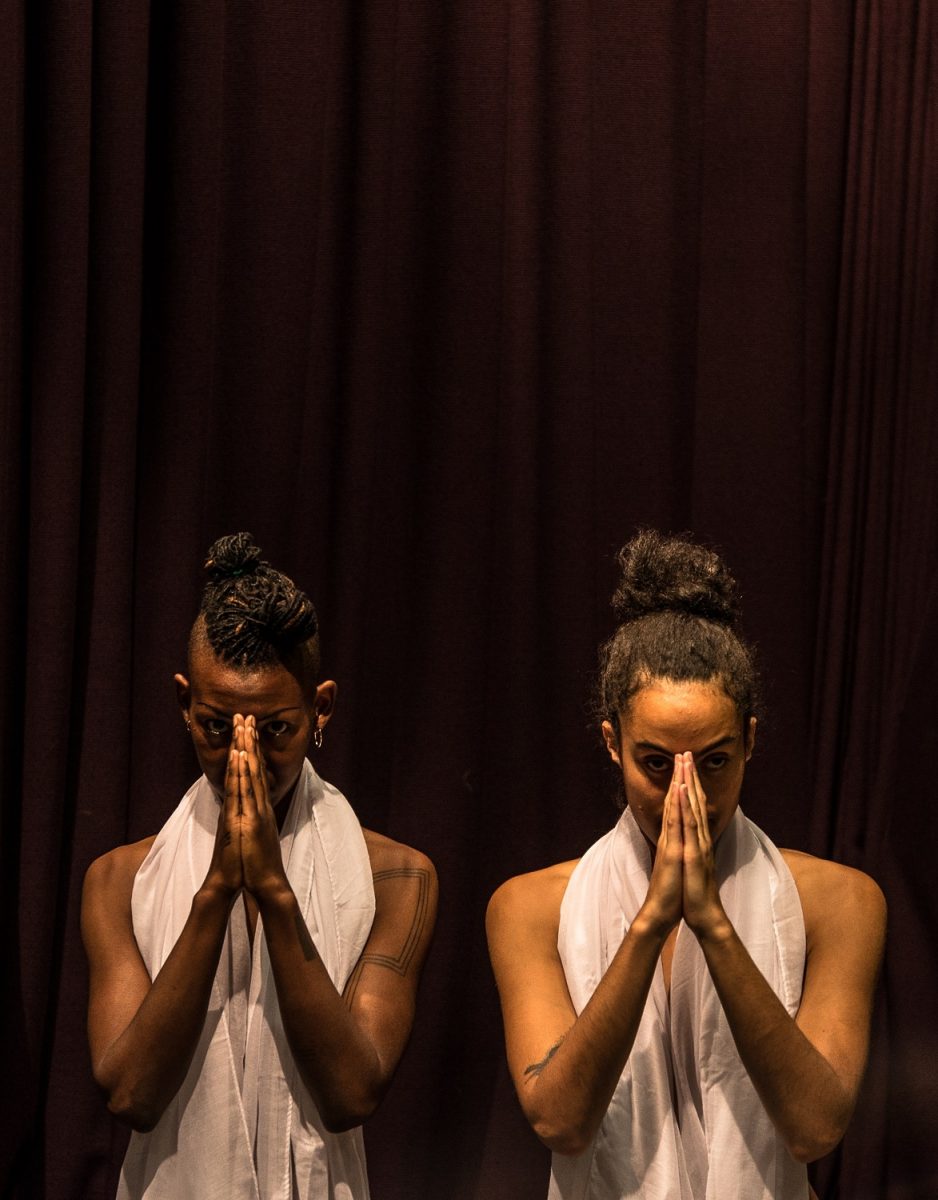Spirit of 47, the theme for this year’s Edinburgh International Festival, refers to the inaugural festival, which imagined providing a city in the depths of post-war austerity with a sense of community and celebration, and unity with Europe. It’s also, perhaps, an unsubtle reminder of European alliances now under threat, given Brexit, which hangs like a thick fog across the United Kingdom, not least Scotland which has opposed it.
Festival guest, New York novelist and academic Paul Auster, quoted from his New York Trilogy: “Stories happen only to those who are able to tell them.” He was describing the intersections between his personal biography and his books, but the words encapsulate a perspective common to the performing arts — that we are here to tell our stories. This desire becomes problematic with a world in flux, as things become more difficult to understand, explain and retell. Works I saw in the first week of the festival had central figures attempting to re-write histories in new ways, to re-examine the ways that we tell ourselves ‘what has happened.’

Minefield, promotional image courtesy Edinburgh International Arts Festival
Lola Arias, Minefield
Minefield features three men who, in 1982, fought for Britain during the Falklands War and three who fought for Argentina during the Malvinas war. It was, of course, the same war. These men, once enemies, are now co-creators of this work directed by Lola Arias. One by one they introduce themselves, talk about their reasons for enlisting and tell their battle stories. They speak in their native tongues with alternating sets of surtitles. Standing within a white cyclorama, they film each other, provide live foley (the crunching of stones accompanies a story of hiking across dry terrain) and even form a Beatles cover band.
But the stories sit in opposition: two versions of history, two ideas of sovereignty. An Argentinian voice yells at a Brit, “Get back, get back, get back to where you once belonged.” One calls, “Where are the British dead in this play?” The crux of the piece is archival interview footage of one of the British soldiers soon after his return to Britain. He breaks down in tears, “Have I just killed someone who was trying to surrender?”
The director has obviously cast with an eye to audience engagement and intensively coached the players — there is none of the aesthetic of the ‘amateur’ here. These men are charming, comfortable on stage and negotiate an immensely complex pattern of movement. It all makes for a dizzying theatrical experience (see a trailer). But is it too entertaining? Too neat? The performers seem able to move all too easily from “if I met a British soldier before I would slit his throat” to “and now I would buy him a beer.” It suggests that theatrical collaboration can heal all wounds. The men have found new ways to speak about a painful past, with forgiveness fitting elegantly into a theatrical denouement, but feeling too simple in such a deeply complex personal and political landscape.
Martin Creed, Words and Music
Martin Creed leaves us alone for a while with an enormous PowerPoint image flashing, “YES. NO. YES. NO.” In stark black and white, it dominates the stage. Eventually Creed clumsily makes a clumsy entrance through the auditorium. He has been sitting behind us, watching us watch. He walks centrestage, beneath the sign, looks up, gives us a devilish grin and quips that perhaps he has already begun.
What follows falls somewhere between performative lecture and rambling gig. Creed, a musician and Turner Prize-winning visual artist and no stranger to controversy, will not tell us exactly what Words and Music is all about. Personal narratives emerge — he recently received a large-scale public sculpture commission in New York, and wanted the the words “Peace, Love and Understanding” to tower over a park. However, the project was thwarted when the fund could only pay for one word. He chose “Understanding,” not least for the visual pleasure of seeing people standing beneath it.
But he doesn’t dwell on anything too long, flitting between feelings about the art world, the fences between countries, a friend’s wedding, and saying ‘yes’ but feeling ‘no.’ There are musings — “Life’s live, isn’t it?” His trousers are important — he has made them himself — improvised, not looking really like trousers are meant to look, but nonetheless doing the job. A near enough approximation. It’s like hanging out with a slightly batty uncle. There are songs, projected doodles (quite literally, with Creed showing us a dick pic he has sketched) and attempts at humour. The performance — slow and greeted icily by the late night audience I was part of — relies heavily on Creed charming us into trusting him, that associations between the sublime and the ridiculous might somehow add up to a cogent account of the quandaries of modern existence. Somewhere in Words and Music there is a warning about the dangers of binaries, the failures of language and a celebration of things that fall between definitions.

Neve Macintosh, Sharon Duncan-Brewster, Meet Me at Dawn, Edinburgh International Arts Festival, photo Murdo McLeod for The Guardian UK
Zinnie Harris, Meet Me at Dawn
Onstage at Traverse Theatre is a conversation conducted by two women, lovers who have washed up from a mysterious accident onto an island in Zinnie Harris’ Meet Me at Dawn. They are in shock, piecing together the moments that led to their arrival. Their memories are slowly gaining clarity, but the realities they recall don’t always make sense. For an hour the performers perch atop a monolithic island designed by Fred Meller. Slowly, facts (or fantasies) are fed to us. We are inside a kind of fairytale which asks, what would you do if you had one wish that allowed you one day with someone you loved who had died? Would you sit in grief, mourning their imminent departure in their presence, or simply while away the time, spending your last day together as any other?
Orla O’Loughlin’s direction is spacious; a heavy atmosphere unfolds slowly across an hour. Much of the performance happens with the actors facing the audience, but not directly addressing us, as their characters ruminate philosophically about love, memory and second chances.
In a work that is poetic and deliberately repetitive, always circling back to the romance central to it, the performances are superb. A lesser director may have steered Meet Me at Dawn towards cliche or sentimentality, but the story is told with gentle sophistication. It’s a drama about grief and 10 minutes in we realise that it won’t have a happy ending, but we are held by a deeply passionate and beguiling ritual of farewelling.
What struck a chord with me in these three works was the struggle of very different individuals to fully grasp the stories they were telling or the realities they were living out, whether actual former soldier enemies seeking reconciliation and forgiveness through theatre, a famous visual artist stumblingly turning to performance to share a lateral worldview, or two characters in a play, sorting out their author’s understanding of love in the face of death. Scotland, deep in political flux about independence and Brexit, is in the process, too, of having a new and uncertain story to tell.
–
Lola Arias’ The Year I was Born featured in the 2017 Perth International Arts Festival and was reviewed by Jana Perkovic. Read an interview with Arias and watch a film about the making of Minefield.
Courtesy of the British Council you can watch Martin Creed’s 75-minute performance, Words and Music.
2017 Edinburgh International Festival: Minefield, writer, director Lola Arias, The Studio, 6-9 Aug; Traverse Theatre Company, Meet Me At Dawn, writer Zinnie Harris, director Orla O’Loughlin, Traverse Theatre, 4-27 Aug; Martin Creed’s Words And Music, The Studio, Edinburgh, 4-27 Aug
Top image credit: Martin Creed, Words and Music, Edinburgh International Arts Festival, photo Murdo McLeod for The Guardian UK
“The two dancers make their way to us in a constrained and systematic series of gestures. They wear white quilted, pleated garments and blocky black high-heeled shoes. They demonstrate a confinement, an entanglement and then a birth. Each emerges with a long steel pin in her hair. White balloons are burst and bones are flung on the floor. They play us, singing, touching, chanting at us.” Osunwunmi, Voodoo, RealTime, 1 March, 2017
In an urgent journey through the haunted territories of diaspora, Project O came to Bristol’s InBetween Time Festival with Voodoo, rigorously demanding from their audience either complicity or confrontation. London-based independent dance artists and collaborators Jamila Johnson-Small and Alexandrina Hemsley talked to me about the work and its roots in the sparkly provocations of O, their previous IBT performance.
JJ I think that O came from quite a fighty place of, like, “Grrrr, we’re here!” And we needed to say these things that weren’t being said. [After] we both went to dance school, I had the idea that I might work for a choreographer. It was horrible, all kinds of fucked up. So for me that was like “Rmph!”
And then people responded [to our work] in lots of ways, but also wanted it. They invited us to spaces, to speak; it seemed like the work was valid to them. And once that happens the fight is different. Now we’re inside, what are we going to say from here?
AH With O, it felt like display. Because, “We’re gonna show you! Because you’re looking at us in the wrong way! We’re going to transform how you look.” Whereas in Voodoo it feels less about showing and more about being or about letting things come: there’s a lot more open improvisation in its current form. Anyway, the work is still in development. It feels like we’ve expanded what we have control over, not just the body but maybe the site that our presence is orientating around. So the world of it feels more considered. It’s quite dystopian: [our] interest in darkening something, darkening the edge of something.
We wanted to hold the same questions that brought us together as a collaboration, about how to live, how to create in this world where various structures almost choreograph you out of them. White supremacist patriarchy is a tough space to exist in, for anybody, but particularly for women and people of colour. So we were holding those questions but wanted to answer them in quite a different way than led our first show.
JJ The thing is the trap of racism and racist structures that I live in and that I just thought were natural. Then you’re like, wait a minute, this doesn’t feel quite right cos I thought this, and then people are treating me like this! And then they’re treating me like that! Then it becomes confusing and you can start to feel you’re going crazy. And you can only know you’re not crazy when someone says, “You’re not crazy” or “I feel that too.” And that’s really important, I think solidarity and other people and discussing things is really important in unpacking this systematic racism. I don’t think you can do that alone.
I’m very concerned with assimilation and ways in which I have internalised assimilationist ideals, intellectually but also physically as I move. And the patterns that my body have gone through in conventional dance training. I’m trying to unpattern and let my body have access to all: trying to let my body be unruly and see what that does. But to try and do that, like how can you let go of everything and still be standing?
Not only the discipline, but to be free of everything. Like, free of the idea that a woman should sit small on a train. Like, I don’t sit small on a train. I sit like this. Now I think more about these things, I wondered when I started sitting like this and why. How that affects how I hold my upper body and what signals I’m trying to send by doing it. And how can I take space in other ways beyond: “I’m just going to take space and I feel really fine like this even though I’m a woman?” How do I just let myself be weird and [find] what makes me feel well? Or what is necessary in this moment and how can I let my body do that? But also still push—not symbolise. This is what I mean: not represent my position but be my position.
I’m interested in the question of how you can stretch anything, how you can expand anything. What else is there in that space beyond what I initially thought. I’m not interested in the conventional aesthetics of virtuosity—but I am interested in it as a concept of expansion or of pushing to the edges of things. And sometimes something falls into something else. Like doing Voodoo as an eight-hour show. I wonder what it would be to encounter that and whether it will be an eight-hour dance show or something else.
AH I think the thing about the traditional aesthetics of virtuosity is that they just exclude so much and so many. Also I feel like any sort of virtuosity is an impossible ideal and I don’t know if I want to spend my life trying to reach impossibility that way. I think the good thing about something being impossible is that it’s endless, it never ends; so if I’m improvising and I’m imagining, then I can just go on and on and on into impossible places.
Watch a video interview with brief performance excerpts here.
Visit Project O’s website.
Top image credit: Project O, O, InBetween Time, 2015, photo Paul Blakemore






